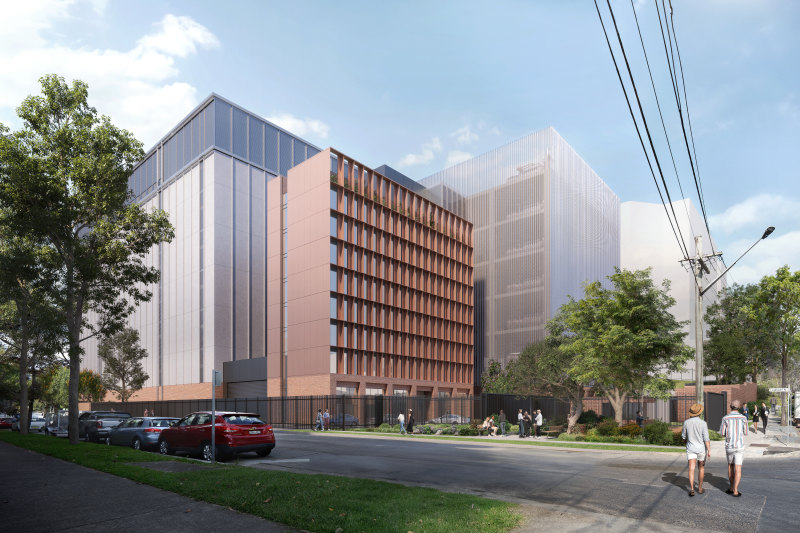Owner-builders cut costs by a third but it's not for everyone

Building a house is a massive financial undertaking, with the average cost of constructing a new home reaching $286,843, according to data from the Housing Industry Association.
It should come as no surprise then that many prospective home builders are looking to slash up to one-third of the construction costs by managing the project themselves.
Building a house as an owner-builder involves co-ordinating and supervising the entire construction process, including managing the various trades involved and taking responsibility for the safety of the building site. Perhaps surprisingly, the job can be done without even swinging a hammer.
While it’s a challenging task, the reward is pocketing the margin that a builder would otherwise charge, reducing the total cost of construction by between 10 and 35 per cent.
- Read more: The ultimate guide to building a new home
The benefits of doing it yourself
According to CEO of Owner Builder Centre Gregory Christodoulou, most owner-builders are primarily looking to cut costs, but it’s not the only reason for wanting to manage the project.
“The saving is the first motivation, but the second is the non-availability of a builder,” he said, noting that the choice of builders might be limited in regional areas.
He said the sense of control over a project appealed especially to creative people. “In this country we’ve got a big do it yourself craze. Being an owner builder for that category is perfect.”
From renovator to owner-builder
For commercial construction manager and experienced renovator Mike Turner, managing his latest project as an owner-builder was an obvious choice.
Mr Turner jumped at the chance to buy a rare vacant lot in the inner-city Sydney suburb of Darlinghurst with DA-approved plans for two townhouses, as a lot of the legwork was already done. “The fact that it had a DA took a lot of the risk out of it,” he said.
Now that the project is complete, Mr Turner has put one of the townhouses on the market, and plans to hold onto the other for the time being.
 Mike Turner oversaw the transformation of a former carpark into two townhouses.
Mike Turner oversaw the transformation of a former carpark into two townhouses.
Although the original building, which at one point was home to a brothel owned by underworld crime boss Tilly Devine, was demolished in the 1940s, groundworks uncovered a treasure-trove of artefacts in the basement.
“The council ordered us to get an archaeologist, which delayed the project by about a month,” he said. “The excavations were slow, as all the items needed to be logged.” The archaeologist cost Mr Turner about $10,000.
Unforeseeable costs and delays can happen with any project, but owner-builders need to be able to budget and reschedule accordingly, a potentially stressful task that would normally be handled by the builder.
 Excavating the lower level revealed the site’s unusual past.
Excavating the lower level revealed the site’s unusual past.
What does it take to be an owner-builder?
Mr Turner said applying for an owner-builder permit online was surprisingly simple. “You can effectively become a builder in a matter of hours,” he said.
Owner-builders need to undertake an approved course or have existing accreditation before applying.
Mr Christodoulou estimates only a fifth of owner-builders have a background in construction, but said an understanding of the building process is essential.
“You need to be able to co-ordinate and have your trades lined up in advance so that as one’s finishing the other is ready to begin,” he said.
- Related: Why building a new home can be cheaper than buying
- Related: The most common building mistakes and how to avoid them
- Related: How to minimise the risks of buying off-the-plan
While hands-on experience isn’t required, Mr Christodoulou said industry connections help. “The larger the project, the more assistance an owner-builder may need from trades and possibly someone from a construction background.”
My Turner said the complexity of his project would have made it virtually impossible without construction experience, but smaller projects were feasible for people with organisational and problem-solving skills.
“Most owner-builders are typically juggling a job and managing a build,” he said. “Unless you’ve got a job or a bank account full of cash, the bank doesn’t want to know you.”
Financing the build was one of Mr Turner’s biggest challenges. Most lenders he approached assessed the application based only on the value of the land plus the cost of construction, without taking into account the estimated value of the completed project. It’s a common conundrum for small-time developers without a track-record of successful projects.
“There was a period where I couldn’t sleep at night,” he said. “Building is easy, but banks are hard.”
Is being an owner-builder worth the hassle?
Mr Christodoulou warned budding owner-builders to consider whether they had the time and resources available to manage a build before diving in.
“It does depend on your personal circumstances,” he said. “If you work full time and can’t find someone to assist, it might not be worth it for you.”
Despite the challenges, Mr Turner found the process satisfying, and is already planning his next build. “I’d finish work for the day and I’d rush over to see what had happened,” he said. “I really liked that process of creating something.”
Five things owner-builders need to know
1. An owner-builder permit isn’t the same as a builder’s licence, but owner-builders are still legally responsible for ensuring all sub-contractors are licensed and insured and provided with a safe working environment.
2. Supervising means more than just making sure tradies turn up on time. Owner-builders need to make sure all workmanship meets a certain standard, which is why building experience helps.
3. It’s harder for owner-builders to secure a construction loan than for homeowners who engage a licensed builder. Most banks only will only lend up to 60 per cent of the land value plus construction costs.
4. Lenders normally make progress payments rather than a lump sum, with each payment dependent on the project reaching a certain stage. A common cash-flow pitfall is spending funds on fixtures and fittings which can’t be installed during the early stages in construction, and therefore aren’t assessed by the bank’s valuer. This can mean funds are withheld and construction stops.
5. The vast majority of lenders won’t approve a loan after construction has commenced, or accept a partially completed home as security. In short, budget conservatively, don’t start construction until the loan is approved, and don’t run out of money.
We recommend
We thought you might like
States
Capital Cities
Capital Cities - Rentals
Popular Areas
Allhomes
More







